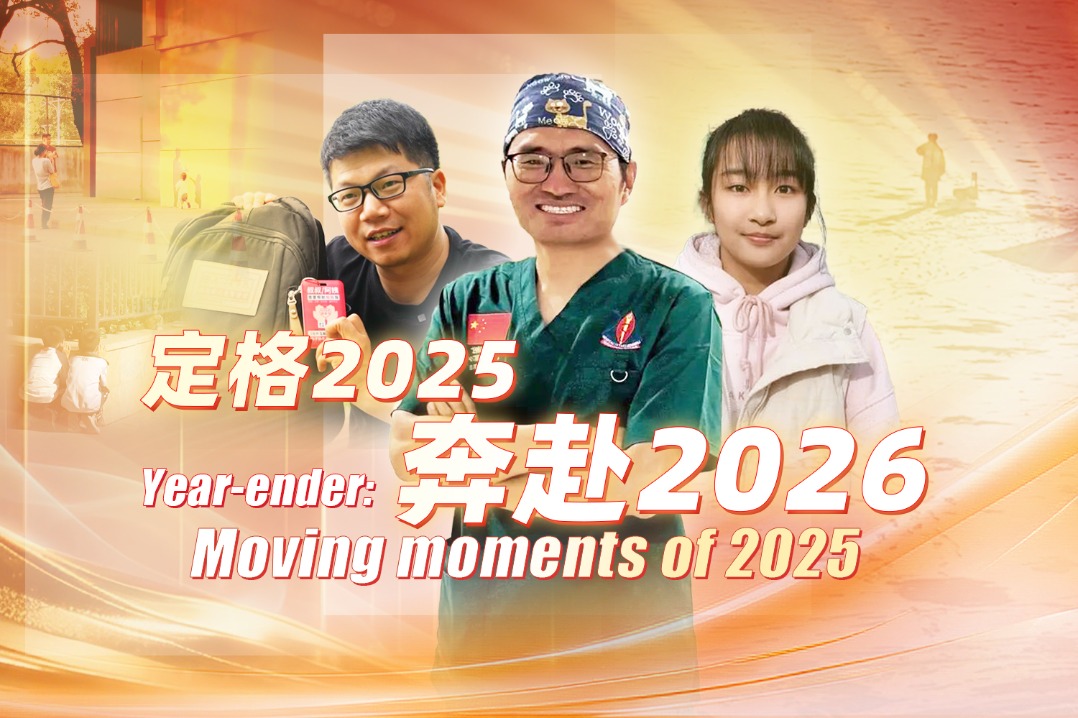National loo upgrade to woo tourists
By Shi Jing in Shanghai | China Daily USA | Updated: 2017-12-22 12:44

Meanwhile, the Duolun Road public toilet, which is located at the east entrance of Luxun Park in northeastern Shanghai, has been rated as the most beautiful toilet in the city for three consecutive years since 2014. The 38-square-meter space features a special ceiling that helps to ventilate the area naturally and it even provides commonly available medication, reading glasses and umbrellas for users.
There are even public toilets in Shanghai that are equipped with electronic screens that show how long a person has been inside a cubicle. Besides informing other users whether a cubicle is currently being used, this system allows toilet staff to check on those who have been in the cubicle for unusually long periods of time.
But administrators are still not quite satisfied with the current state of Shanghai's toilets. Zhang Feng, director of Shanghai's environmental quality monitoring center, said that one of the major goals in the next three years would be to significantly increase the number of unisex toilets. There are currently only about 250 of them.
He noted that such toilets would be able to cut down waiting time at the women's toilets and be beneficial to families with senior citizens and underage children who require assistance to relieve themselves.
Wu Jianguo, inspector at Shanghai Municipal Tourism Administration, said during a government meeting at the beginning of December that the city should look to increase the number of public toilets and improve user experiences over the next three years. Improving the standard of public restrooms, enhancing management and services, adopting technology and educating users were also cited as priorities.
Shanghai is not the first to place emphasis on the upgrading of public toilets. Over in Germany, Hans Wall, the founder of Berlin-based outdoor advertiser Wall AG, has been infusing color into toilets in the country since the early 1990s, turning many of them into landmarks. Some of these restrooms have become so renowned internationally that major companies such as Apple, Samsung and Chanel have featured them in their commercials.
It is estimated that such toilets in five European cities, including Berlin and Frankfurt, generate at least 30 million euros ($35 million) in profit every year.
The Disease Prevention and Control Bureau of the National Health and Family Planning Commission of China has also echoed the fact that well-designed toilets represent a worthwhile investment.
In a 2014 report, the bureau pointed out that the profit gained from renovating a public toilet in the country, especially those in the rural areas, was five times of the cost. Toilets generally earn through entrance fees and leasing of advertising space.
In light of this, the General Office of the State Council released a guideline to increase tourist investment and consumption last August. One of the main objectives was the establishment of more public toilets in tourist destinations around the country.
By the end of this August, about 29,500 tourist-friendly toilets in such locations were built or renovated.
Companies such as China Everbright Real Estate, Jiangsu Huahong New Energy Company and Beijing Landwasher Technology Development have since jumped at this opportunity.
For instance, Landwasher Technology is currently involved in a toilet renovation project in Tibet which started in 2016. The company's flush-free technology is said to be ideal for such regions where the plumbing system is poor.
Wu Hao, general manager of Landwasher, said that the launch of the "toilet revolution" has resulted in a 50 percent increase in the company's sales. He added that the national initiative has been a boon for small companies like his.
"Presently, small privately-owned technology companies are the major contributors to innovation in environmental protection technology and toilet renovation in China. They have helped to optimize the industrial structure," he said.
"The value chain related to public toilets is larger than most of us can see. First of all, it can help to boost the revenue at tourist attractions by more than 10 billion yuan ($1.5 billion). Furthermore, the living standards in the rural areas in China can be improved," he added.
shijing@chinadaily.com.cn
























